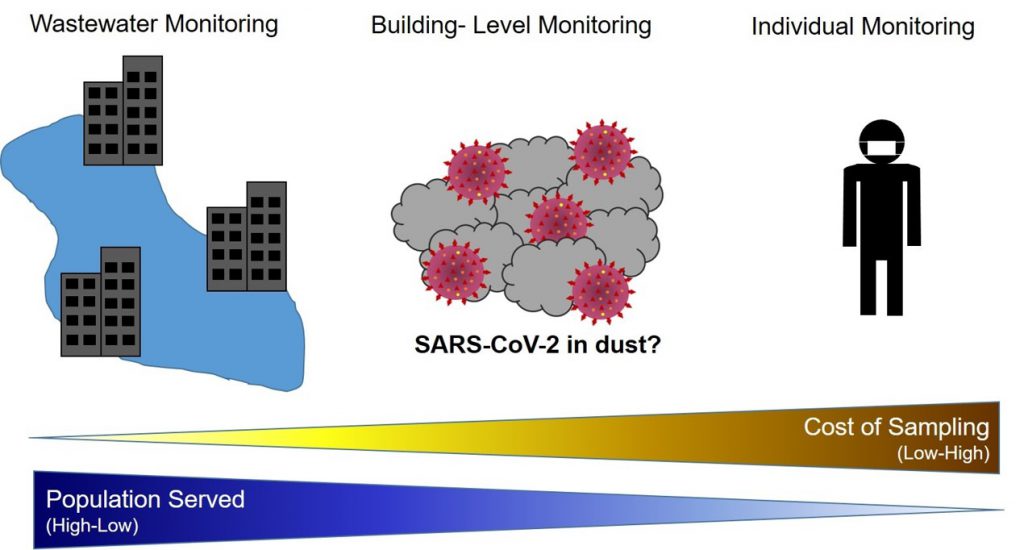A new viral disease surveillance tool: Indoor dust as a matrix for surveillance of COVID-19, published in mSystems.
Throughout the COVID-19 pandemic, large scale monitoring of SARS-CoV-2 has helped to prevent spread and inform public health decisions. This has largely been done through individual sampling (ie nasal and saliva sample collection) and through environmental surveillance in wastewater. Monitoring needs will continue to exist in the future after mass vaccination to continue to measure variants of concern and in facilities where vaccination rates are low. However, an additional tool is needed to monitor SARS-CoV-2 at the building scale, particularly in high-risk settings such as congregate care facilities.
This study measured RNA from SARS-CoV-2 on surface swabs, passive samplers, and bulk dust samples collected from rooms of individuals who tested positive for COVID-19. SARS-CoV-2 viral RNA was measured within these samples using quantitative reverse transcription polymerase chain reaction (RT-qPCR) and two digital PCR (dPCR) methods. This study did not measure SARS-CoV-2 infectivity. We found that dust was the most efficient sample type for detecting SARS-CoV-2 viral RNA, with 88% of bulk dust samples testing positive for SARS-CoV-2 (or up to 97% when measured with droplet digital PCR). We also found that viral RNA in bulk dust did not degrade after 4 weeks.
These results demonstrate that dust may be an efficient matrix for environmental monitoring of SARS-CoV-2. As a larger percentage of the population gets vaccinated, time and cost intensive individual monitoring will become less feasible. Environmental surveillance allows us to measure larger populations and will be an important ongoing monitoring effort as pandemic restrictions begin to lift. This tool could be used to complement wastewater monitoring, and indoor dust is already being collected through standard cleaning procedures in many buildings. Environmental viral monitoring at the building level can inform important health decisions, which will be especially important in congregate care facilities and other high-risk settings.

We are not interested in dead virus. They are probably everywhere.